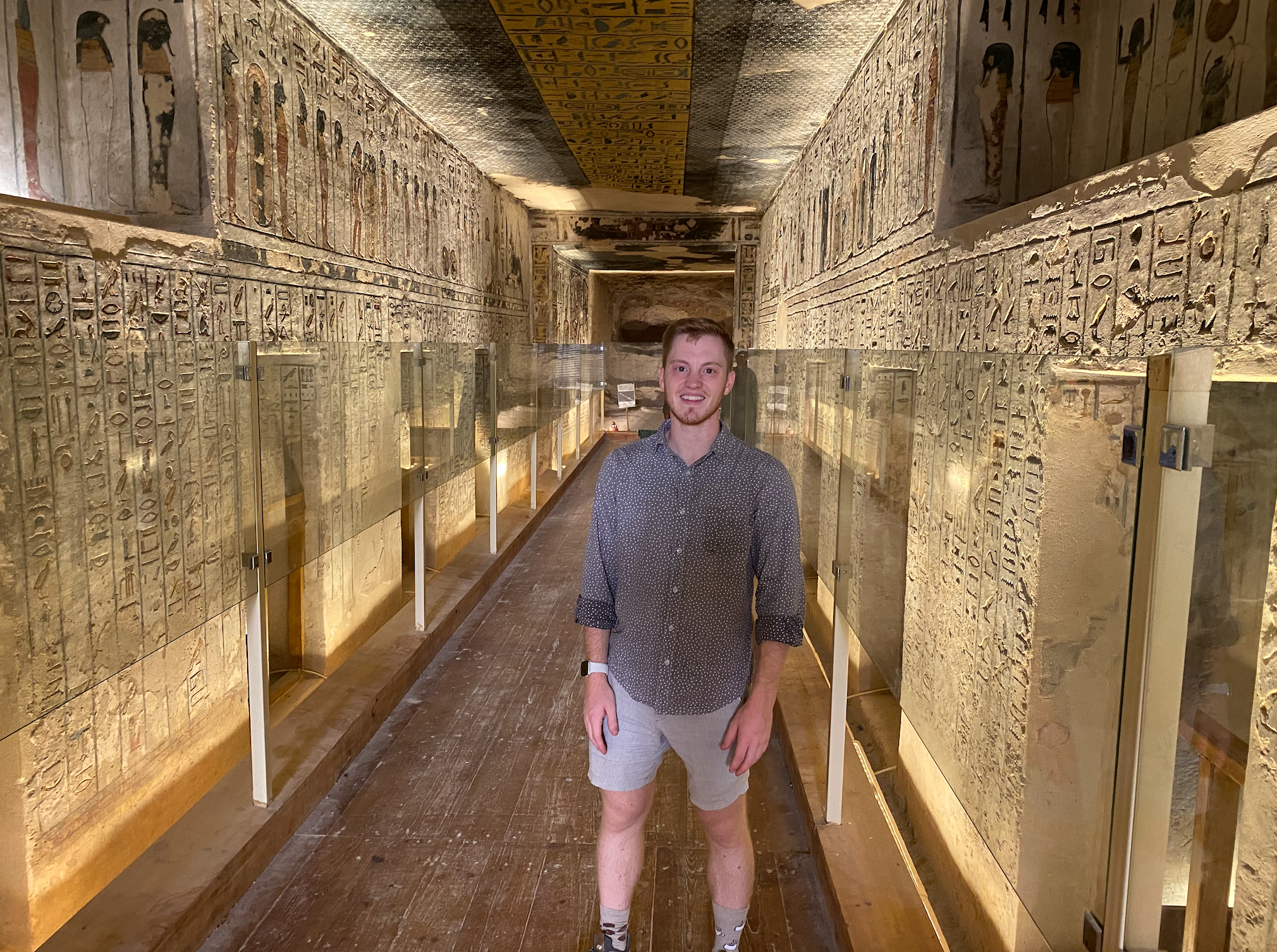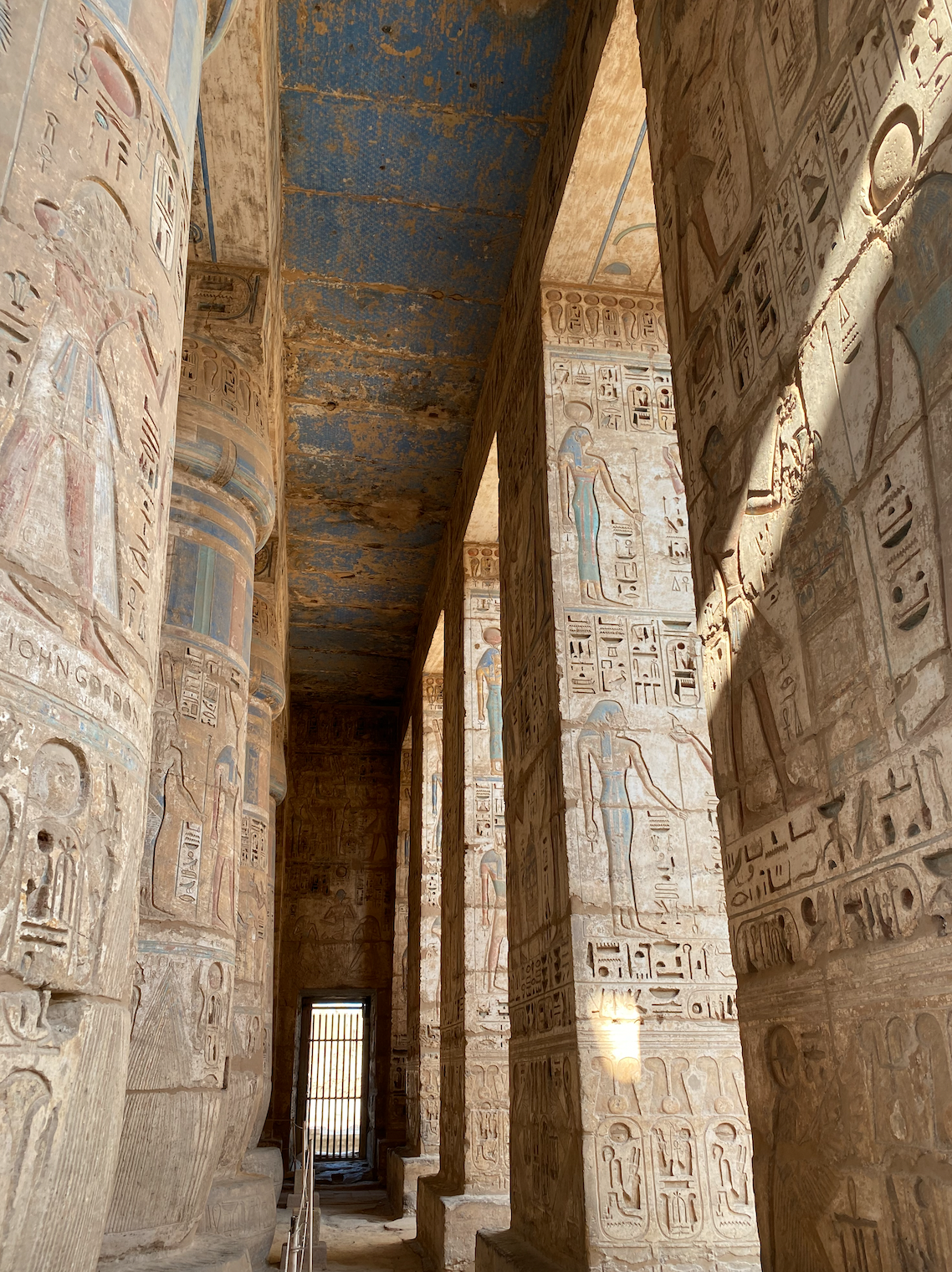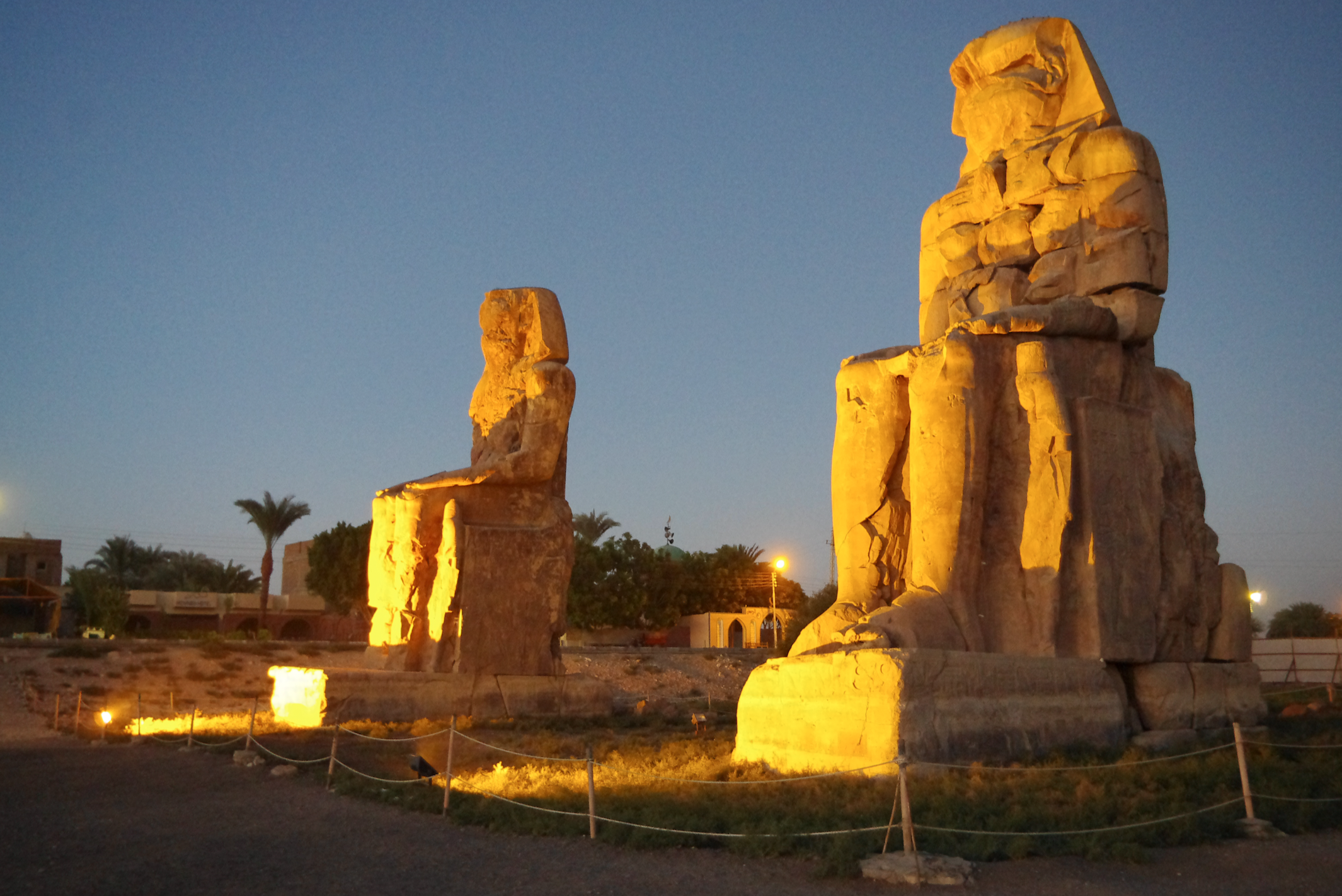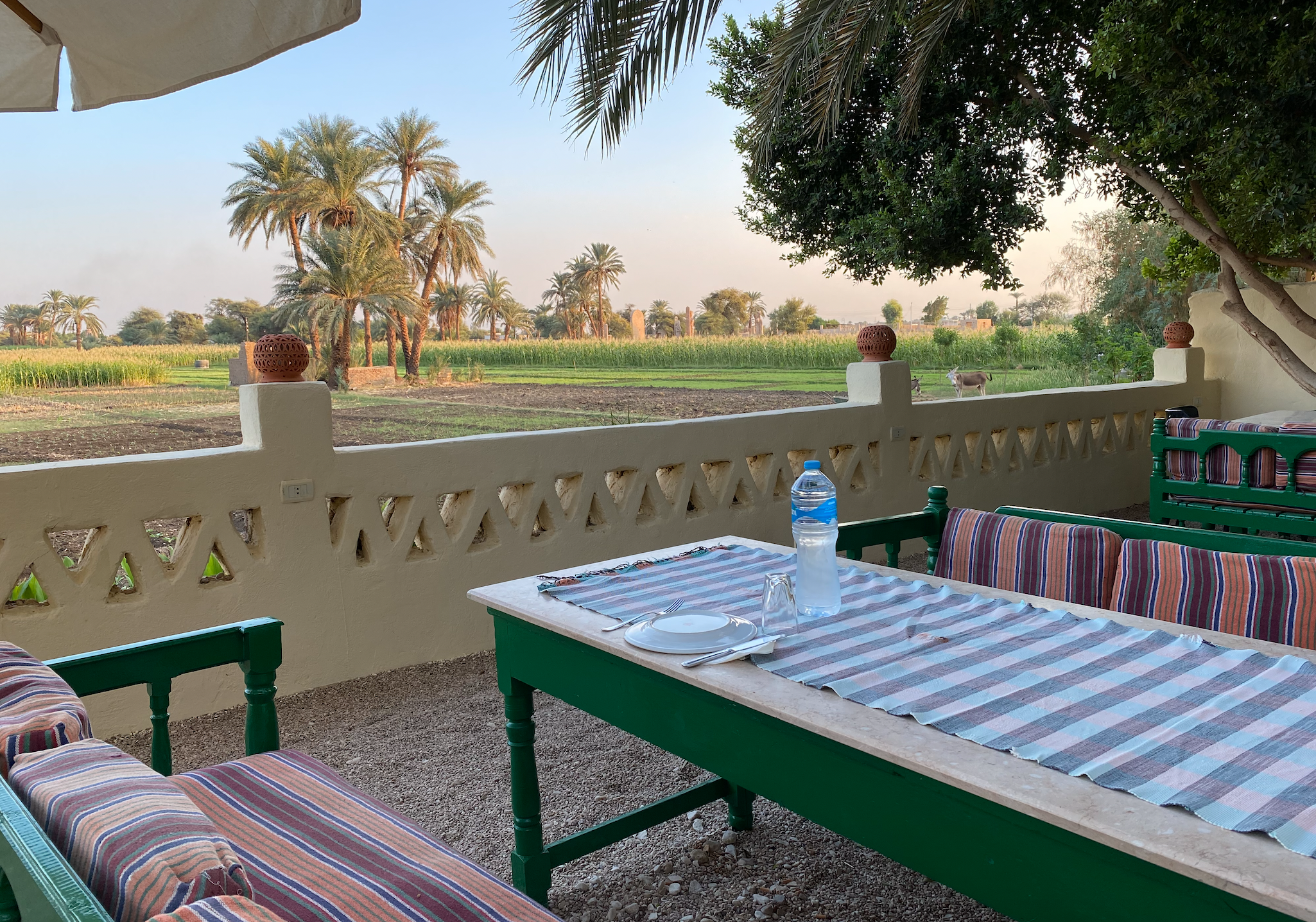Luxor, Egypt in just two days
Luxor Temple in downtown Luxor, one of the must-sees when visiting what used to be the ancient Egyptian capital of Thebes.
Luxor has more ancient history still intact and accessible to visitors than any other city in the world.
Even though it is small compared to the megalopolises of Cairo and Alexandria, it boasts several temples, tombs of some of the most important pharaohs, and a museum filled with artifacts any Egyptology department in the world would love to have on display.
With all that Luxor has to offer, it is almost always on any travel itinerary we put together. But despite having so much to see, we recommend only spending two-three days there because of all the other places to visit in Egypt. So how does a traveler experience Luxor in just two days? We’ll show you!
First, we will go over some tips and tricks to keep your time in Luxor short and focused on the most important experiences. Then, we will go over our six must-see sights, and a restaurant that anyone in Luxor has to eat at. We’ll finish up by sharing some places to add to the mix if you find yourself with some extra time on your hands and want to see more of Luxor.
Tips and tricks
Having a game plan, staying organized, and focusing on efficiency is how we are able to cram a lot into just two days. When you do an Egypt trip with us, we will take care of these things, but if traveling on your own, here’s some advice to make the most of your two days in Luxor.
*Fly, don’t take the train or bus: Luxor is just a 45-minute flight from Cairo, and this is the best way to maximize your time in the modern-day-Thebes--spend the extra money, and fly. Flights can be as cheap as $120 round trip, and usually will not be more than $250 per person. Even though the train and bus are very cheap (usually around $10-20 round trip), they take 8 hours (or more) and often leave travelers needing some rest and recuperation upon arriving in Luxor. If you fly, you will be ready to hit the ground running!
Note: We love taking the train in Egypt, so why not take it to Alexandria instead? Check out our YouTube video on how to take the train from Cairo to Alexandria.
*Avoid the sleeper train: The sleeper train to Luxor is around the same price as flying ($80 one-way), is not that comfortable, and takes 8 hours to arrive, instead of just 45 minutes to fly.
*Stay in a central hotel: Hotel choice is key so you are close to what you want to see and do. On the East Bank (east side of the Nile River), we would recommend staying in the Winter Palace (the Pavilion Winter is on the same hotel grounds and a more budget-friendly option). The Winter Palace is right next to Luxor Temple, close to lots of restaurants, and a quick walk away from the ferry heading to the West Bank. On the West Bank, the Amon Hotel is a lovely, family-run place that has a gorgeous garden and a serene calmness about the place. If you stay at the Amon, your driver can easily take you to the West Bank sites, and you can easily walk to the public ferry to head to the East Bank.
Breakfast at the Amon Hotel is served in the tropical garden, full of plants native to Egypt and from other parts of the world.
*Prearrange your driver and guide: Going with Egypt Adventures Travels means we will have this covered, but if you are going solo, make sure you have your driver and guide lined up before you arrive from Luxor. Often asking your hotel for a driver and guide is a good choice. Make sure they know to pick you up at the airport when you arrive, too!
Our Must-Sees
West Bank:
*Note: all sites listed here are pictured above, in order
Valley of the Kings: this is the burial place for New Kingdom Pharaohs, and is the home to the famous tomb of Tutankhamun, or “King Tut”. The ticket for the valley only includes visiting three tombs, and the ticket for Tut is extra. Definitely pay the extra money for the Tutankhamun ticket, and for the other tombs, we would recommend visiting Merenptah, Thutmosis III, and Ramses V/VI
Hatshepsut’s Temple at Deir el-Bahri: Hatshepsut was one of the most fascinating pharaohs of ancient Egypt, and her temple is beautiful and majestic, built into the side of a mountain.
Medinet Habu: This temple was built by Ramses III and is the best-preserved temple in Luxor. Many spots still have the original paint, and tons of inscriptions are still visible. What’s even better is that this temple is in a charming little village and is never as busy as the other sites on the West Bank.
Colossi of Memnon: The colossi are two massive seated statues of Amenhotep III, and mark the entrance to his temple that is currently being reconstructed by archaeologists. These colossi are awe-inspiring and also a quick stop, free, and perfect for a photo-op.
Note: After you are done visiting the sites on the West Bank, head over to the Marsam Hotel (located right by the ticket office for West Bank sties) for a delicious lunch or dinner. The Marsam serves authentic southern Egyptian food and features hearty sides and some amazing house-baked bread in the Luxor style. Eating at the Marsam is a must for any tourist in Luxor!
Lunch at the Marsam Hotel has a gorgeous backdrop—second to tourism, agriculture is at the heart of Luxor’s economy, and the countryside is wonderful to take in.
East Bank:
Karnak Temple: Karnak is one of the largest religious complexes in the world, and it’s massive pillars, gigantic gates, and towering obelisks have survived thousands of years. You could spend over an hour here simply wandering throughout the enormous complex, just don’t miss the massive statue of a scarab beetle!
Luxor Temple: Nestled in between a McDonald’s and the Nile River, Luxor Temple is an ancient masterpiece smack dab in the middle of downtown Luxor. Luxor Temple is especially impressive because of its avenue of the sphinxes, hundreds of sphinx statues that connect the temple via walkway to Karnak.
If you have more time…
While the above sites can easily be done in two days (if you follow our tips and tricks to maximize your time), if you find yourself with more time in Luxor, here are some of the sites that didn’t make our must list, but would be great to see on an extended stay.
Luxor Museum: Luxor’s Museum answers a lot of the complaints about the Egyptian Museum in Cairo--the collection is clearly labeled, explanations are given for different time periods, objects, and important events in ancient Egyptian history, and the layout is easy to navigate and uncluttered.
Tombs of the Nobles: After seeing tombs of pharaohs, the nobles’ tombs on the West Bank may seem small and simple, but they are still covered with well-preserved artwork and are interesting to explore.
Ramesseum: Ramses II (Ramses the Great) was a larger-than-life pharaoh, and even though his temple is not well preserved, it is cool to take in and boasts a massive statue of Ramses the Great that, even though it isn’t standing, will still impress and awe.
Valley of the Queens: See the tombs of the queens of ancient Egypt, and if you have the money, buy a ticket for the price of 1,000 Egyptian Pounds (about $65 at the time of writing) to the glorious tomb of Nefertari, the most majestic tomb that can be visited in Luxor.
The Ramesseum is a lovely temple to see if you have some extra time.
Seeing Luxor in just two days may seem daunting, but if you follow our tips and tricks above and stick to our must-see list, you will spend two days admiring the best of what this open-air museum has to offer, and will still have time to zoom off to other destinations before your Egypt adventure comes to a close.
What site would you love to see in Luxor? Are you a traveler who likes to maximize your sightseeing opportunities, or see fewer places but go more in-depth at each one? Leave us a comment and let us know!










